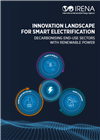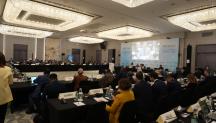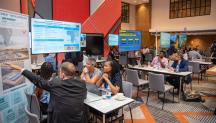
-
-
IRENA (2023), Innovation landscape for smart electrification: Decarbonising end-use sectors with renewable power, International Renewable Energy Agency, Abu Dhabi.
Copied
Innovation landscape for smart electrification
Newsletter
In order to achieve the collective goal to secure a carbon-neutral future, the global energy transition focuses not only on how energy is produced but also, importantly, on how it is consumed; both supply and demand must be simultaneously transformed to deliver the efficient and effective decarbonisation of the entire system. Innovation in end-use sectors is therefore integral to the transition.
On the supply side, wind and solar technologies have experienced rapid growth in recent years, making substantial amounts of clean electricity available to power systems; IRENA’s 2019 report, Innovation landscape for a renewable-powered future, mapped 30 key innovations for integrating high shares of variable renewable electricity in power systems. However, the demand side has not evolved in parallel. Today, the transport and heating sectors continue to largely rely on fossil fuels; yet, both direct and indirect electrification with renewable power now provide feasible solutions to electrify many end-use sectors, thanks to the sharp cost reductions for wind and solar technologies.
See the visual story: How to decarbonise end-use sectors with renewable power?
This report presents key innovations that can form the basis of smart electrification strategies. These strategies offer cost-effective decarbonisation pathways to electrify end-use sectors, increase system flexibility and incorporate large shares of renewable energy in power systems. The report offers pathways to end-use electrification in the areas of power to mobility; power to heat and cooling; and power to hydrogen. These are based on 100 key innovations, categorised within four dimensions: (i) technology and infrastructure; (ii) market design and regulation; (iii) system planning and operation; and (iv) business models.





